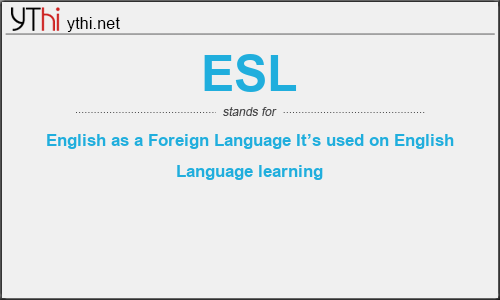What does ESL mean? What is the full form of ESL?
The full form of ESL is English as a Foreign Language. It’s used on English Language learning
ESL is English as a Second Language (ESL or TESL) or EFL is English as a foreign language is a traditional term for the use or study of the English language by non-native speakers in an English-speaking environment (it is also known as English for speakers of other languages.) That environment may be a country in which English is the mother tongue (e.g., Australia, the U.S.) or one in which English has an established role (e.g., India, Nigeria). Also known as English for speakers of other languages.
English as a Second Language also refers to specialized approaches to language teaching designed for those whose primary language is not English.
ESL
means
English as a Foreign Language It’s used on English Language learning![]()
Translate English as a Foreign Language It’s used on English Language learning to other language.


Leave a Reply
You must be logged in to post a comment.